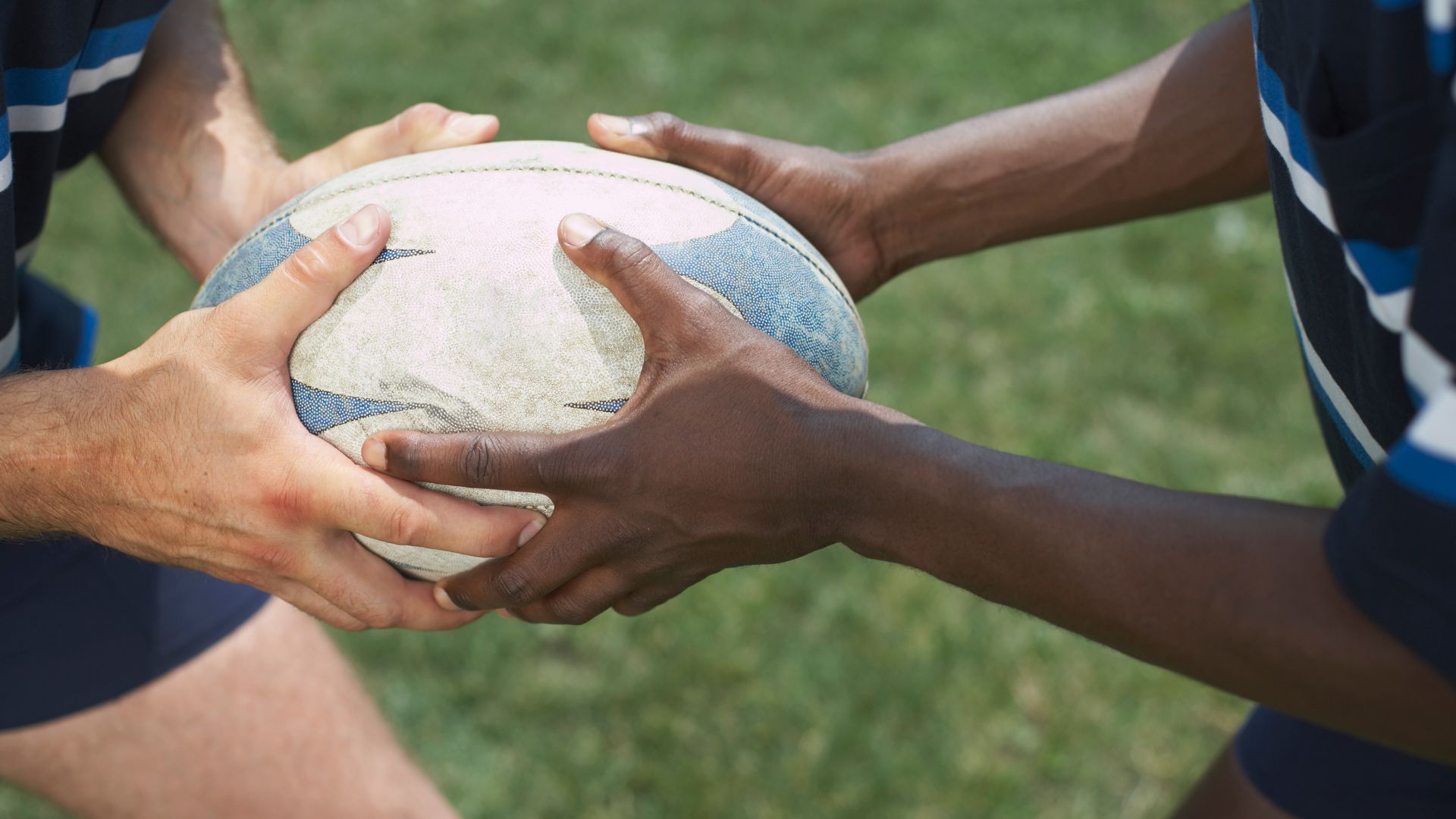Has it ever occurred to you which rugby position might be ideal for you? You’re not by yourself.
Knowing where to stand on the rugby pitch may really make a big difference.
Together, we will explore the world of rugby positions and assist you in locating your dream job.
Introduction to Rugby Positions
Rugby is an advanced sport, it consists of 15 players. Each of them has distinct roles that each player must fulfill.
The forwards and the backs, are the two main key groups that play on the pitch.
Suppose the forwards are the powerhouses while the backs are the speedsters.
It’s not that easy; there are positions suitable for all body types and skill levels.

Overview of Forward Positions
Forwards are the engine room of the team, involved in scrums, rucks, and mauls.
Front Row (Props and Hooker)
Props are the tank-like players who anchor the scrum.
They need to be strong as oxen and stable as mountains.
The hooker‘s in the middle, using their feet to hook the ball back in scrums.
Second Row (Locks)
Locks are the tall timber of the team, often winning lineout balls.
They push in scrums and provide lift for jumpers.
Back Row (Flankers and Number 8)
Flankers are the all-rounders, tackling machines with the stamina of marathon runners.
The Number 8 is like the quarterback of the forward pack, making crucial decisions.
Overview of Back Positions
Backs are the glory boys, scoring tries and making headlines.
Half-backs, namely Fly- and Scrum-halfs
With the quickness of a hiccup, the scrum-half connects forwards and backs.
Jonny Wilkinson and other fly-halves are the playmakers; they set the flow of play and score goals.
Centers
Centers are the midfield maestros, combining power and finesse.
They’re crucial in both attack and defense.
Wings
Wingers are the speed demons, often finishing off tries in the corner.
They need to be fast, agile, and have hands like glue.
Fullback
The fullback is the last line of defense, with a big boot and nerves of steel.
They need to be good under the high ball and have a tactical mind.
Factors to Consider When Choosing a Position
Picking your position isn’t just about where you fancy playing.
It’s about matching your attributes to the role’s requirements.
Physical Attributes
– Height: Tall? Consider lock or second row.
– Weight: Heavy-set? Prop might be your calling.
– Speed: Quick off the mark? Wing or fullback could suit.
– Strength: Powerful build? Look at the forward positions.
Skills and Strengths
– Handling: Great hands? Center or fly-half might be for you.
– Kicking: Strong boot? Fly-half or fullback could be your spot.
– Tackling: Love the contact? Flanker or center might be your jam.
– Vision: Good at reading the game? Fly-half or scrum-half could be perfect.
Personal Preferences
– Which would you rather be in the middle of the action or out in the open?
– Do you feel confident making snap decisions?
– Do you enjoy the physical aspects or prefer open space?
Remember, the rugby position you should play depends on a mix of factors.
How to Determine Your Best-Suited Position
Finding your ideal rugby position is a journey of discovery. Here’s how to navigate it:
Self-Assessment
Start by taking an honest look at yourself:
– What are your physical strengths? Are you tall, strong, fast, or agile?
– What skills do you excel at? Passing, kicking, tackling, or decision-making?
– What aspects of the game do you enjoy most?
Consider how these align with the different position requirements we’ve discussed.

Coach’s Input
Your coach can be an invaluable resource:
– They have an external perspective on your abilities
– Coaches understand how different positions fit into team strategy
– They can spot potential you might not see in yourself
Don’t hesitate to ask for their opinion on where you might fit best.
Trying Different Positions
There’s no substitute for on-field experience:
– Ask to try different positions during training
– Pay attention to which roles feel most natural
– Notice where you make the biggest impact
Remember, greats like Dan Carter of the All Blacks often played multiple positions before finding their niche.
Conclusion and Next Steps
Choosing your rugby position is a mix of self-awareness, guidance, and experimentation. Here’s what to do next:
1. Reflect on your attributes and preferences
2. Discuss options with your coach
3. Try out different positions in training
4. Be open to change – your ideal position might surprise you
Recall that rugby is a team activity.
The best role for you is the one where you can most effectively contribute to the success of your team and help your teammates win a game.
Whether you end up in the forward at Twickenham Stadium, or running the backline at Eden Park, the key thing is to keep having fun and developing your skills more.
Always remember that over their careers, many athletes switch positions. What matters most are your passion for the game and your commitment to improving your skills.
Go forth, try on various roles, and discover your strengths on the rugby pitch.
Who knows? You might be the next star lighting up the Six Nations Championship or Rugby World Cup.